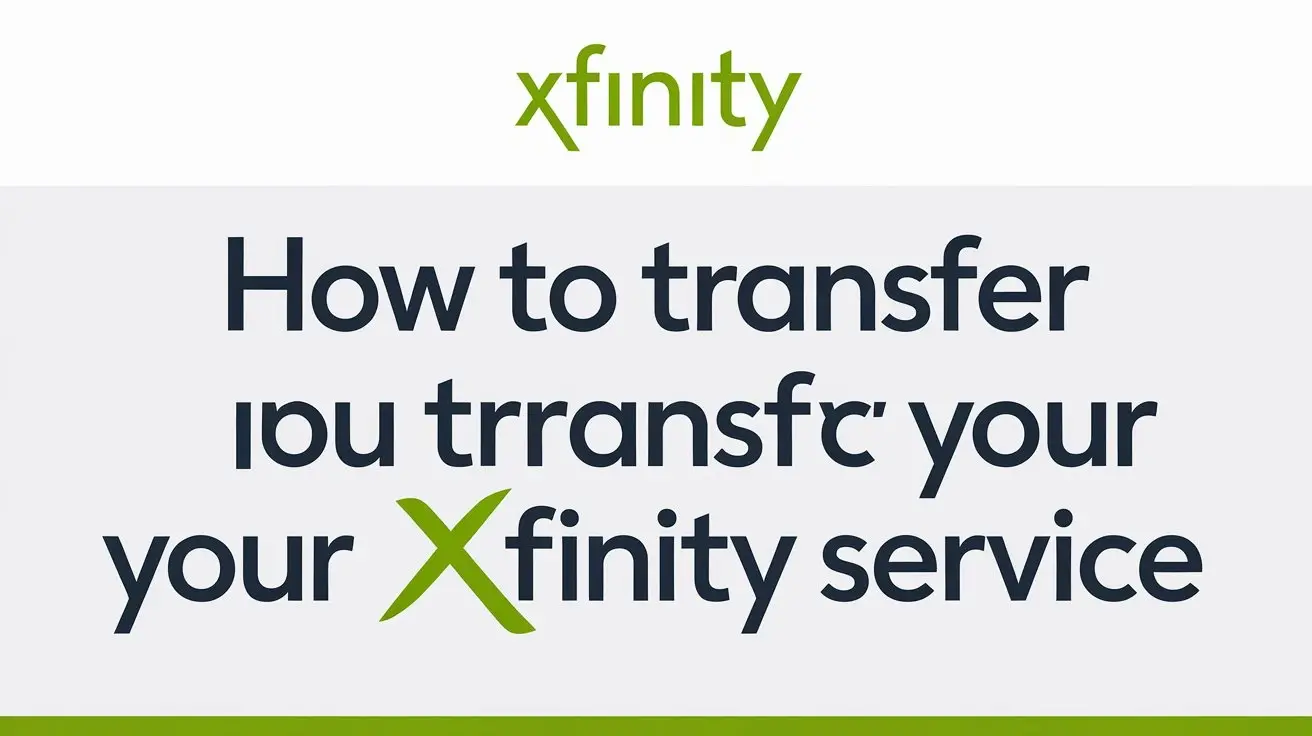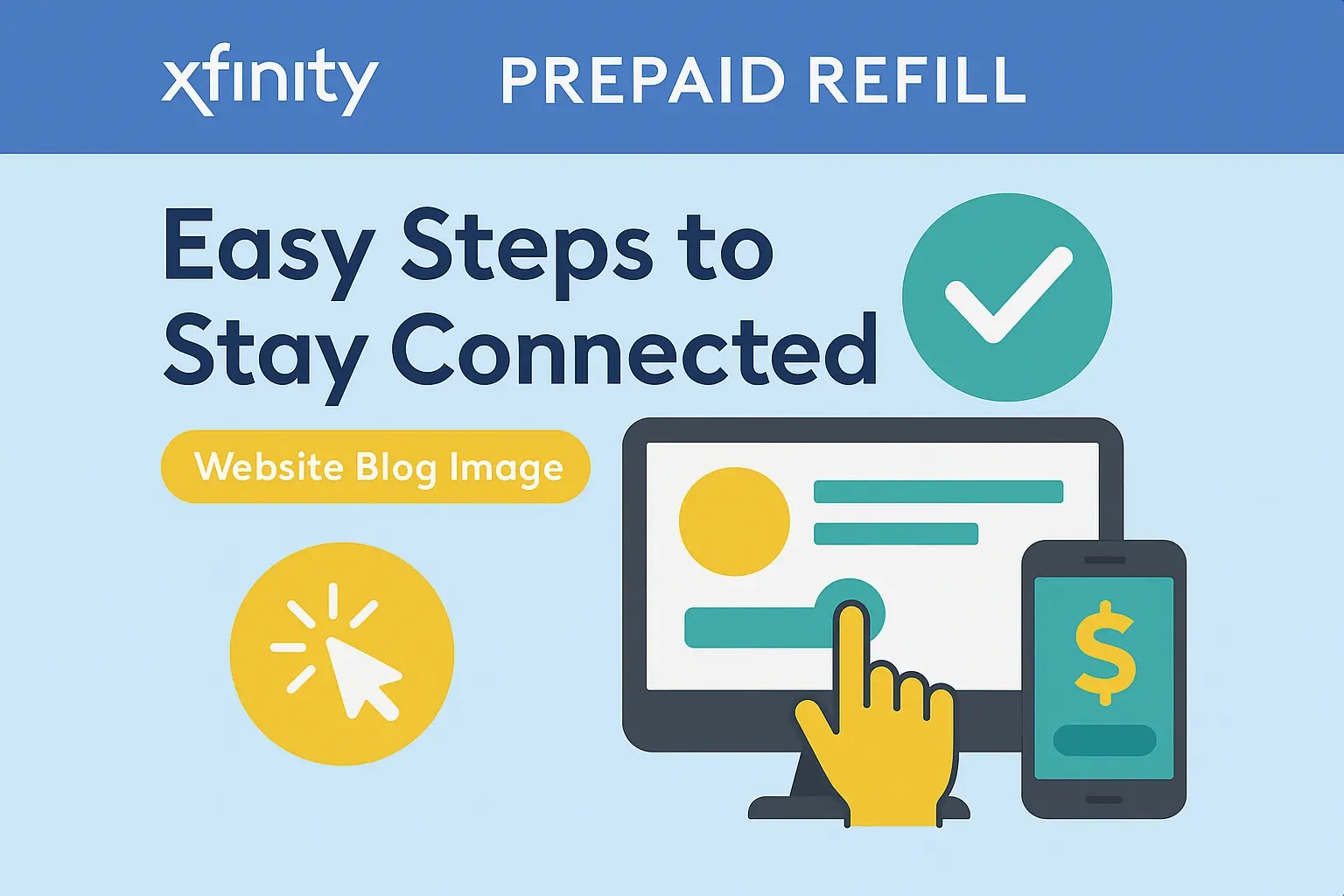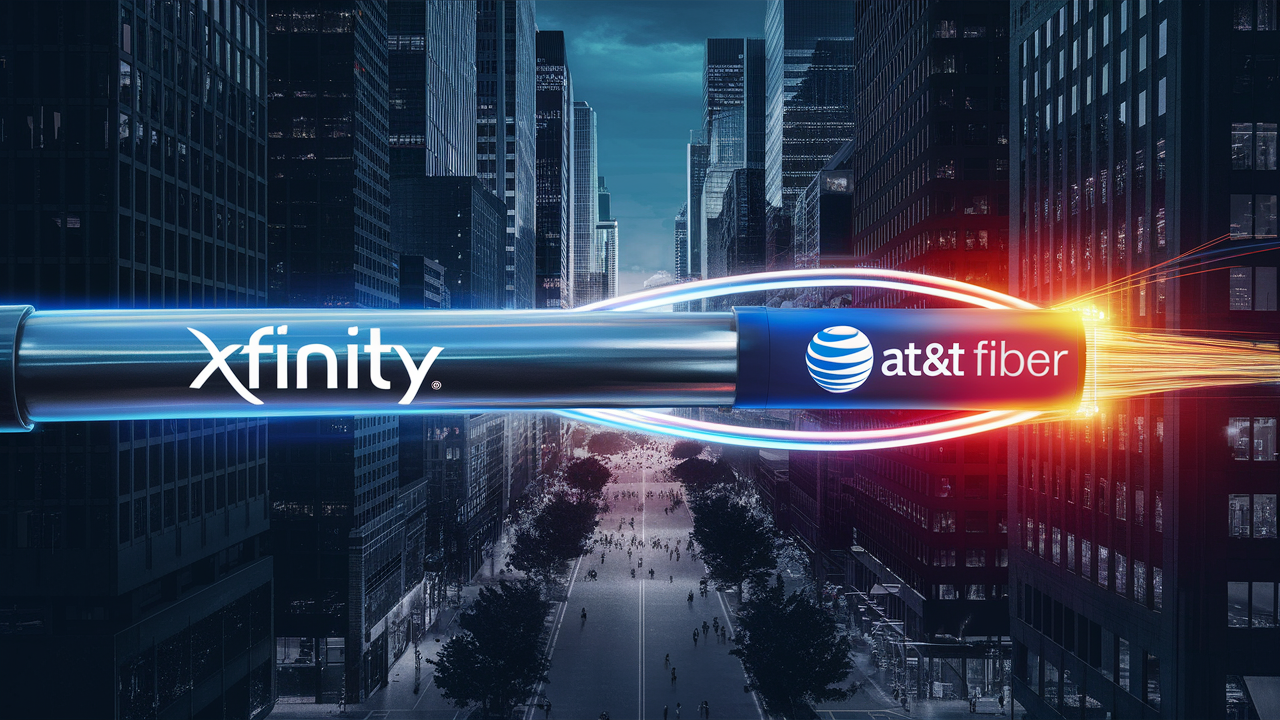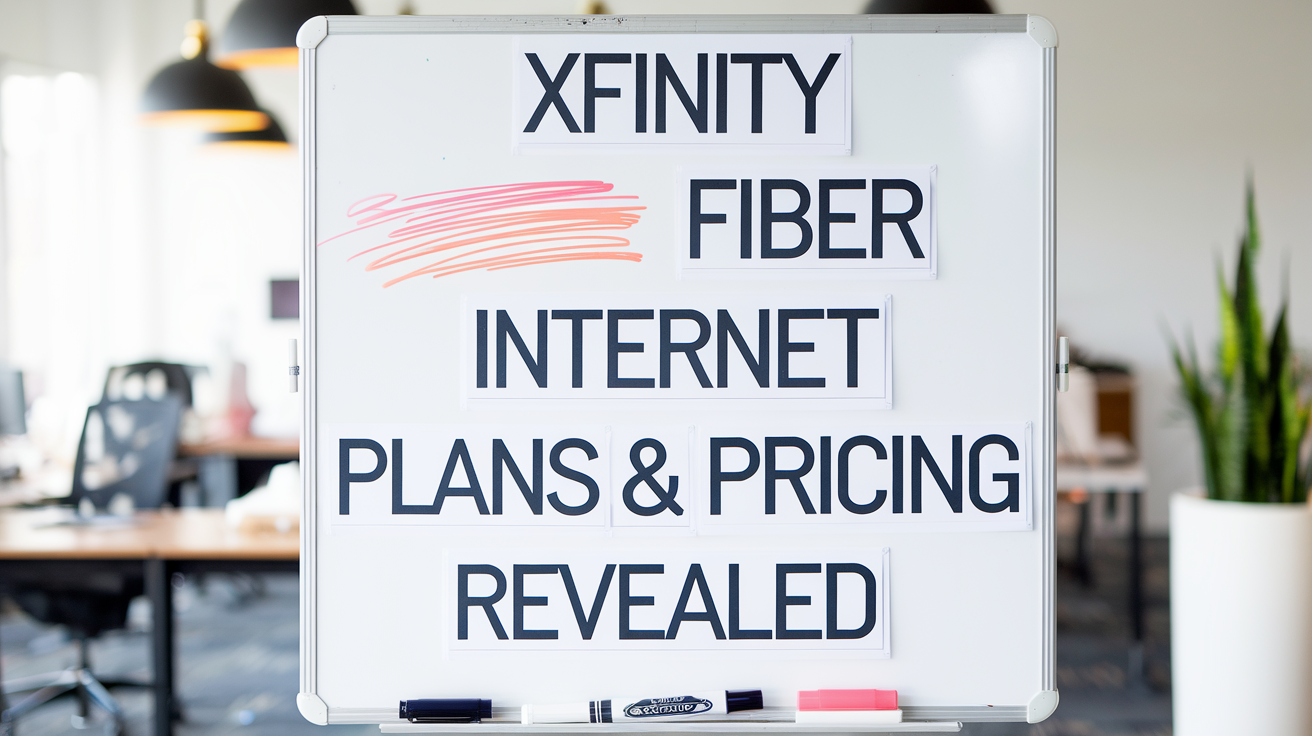How to Transfer Your Xfinity Service? A Step-by-Step Guide

Moving your Xfinity service can seem daunting, but this comprehensive guide breaks down the process step-by-step. We cover everything from checking serviceability at your new address to managing equipment and understanding potential costs, ensuring a smooth transition for your internet, TV, and phone services in 2025.
Section 1: Navigating Your Xfinity Service Transfer in 2025: A Comprehensive Overview
Relocating your home is a significant life event, often accompanied by a flurry of tasks, from packing boxes to updating your address. Among these, ensuring your essential services, like internet, cable TV, and home phone, remain uninterrupted is paramount. For millions of Americans, Xfinity is their provider of choice. Transferring your Xfinity service to a new address might seem like another complex item on your to-do list, but with the right information and preparation, it can be a straightforward process. This guide is designed to demystify the Xfinity service transfer, providing you with all the necessary steps, considerations, and insights to make your move as seamless as possible. We'll delve into what's involved, what you need to do, and what to expect, ensuring you're well-equipped to handle this transition efficiently. In 2025, with the increasing reliance on stable internet for remote work, education, and entertainment, a smooth service transfer is more critical than ever. We aim to provide clarity and confidence, whether you're moving across town or across the state, ensuring your digital life stays connected. Understanding the specifics of Xfinity's transfer policy, potential costs, and the timeline involved will save you time and potential headaches. We will also touch upon the evolving technological landscape and how Xfinity is adapting its services for new residential environments, offering insights into the latest available plans and equipment that might be beneficial at your new location. This article is your definitive resource for a successful Xfinity service transfer in the current year.
Section 2: Understanding the Nuances of Xfinity Service Transfers
Transferring Xfinity service isn't just about flipping a switch; it involves understanding several key components that influence the process. The primary consideration is serviceability. Xfinity operates a vast network, but its availability and the specific services offered can vary significantly by geographic location. Even within the same metropolitan area, different neighborhoods might have access to different tiers of internet speeds or cable packages due to infrastructure limitations or upgrades. Therefore, the very first step in any transfer is confirming that Xfinity services are indeed available at your new address and that the services you currently subscribe to can be replicated.
Serviceability Checks: The Foundation of Your Transfer
Before you even initiate a transfer request, you must verify serviceability. This is typically done through Xfinity's website or by contacting their customer service. You'll need the new address to perform this check. The system will then inform you about the available internet speeds, TV packages, and phone services at that specific location. It's crucial to note that sometimes, while basic internet might be available, the higher-speed tiers you're accustomed to might not be. This could necessitate a plan adjustment. In rare cases, Xfinity might not service your new address at all, requiring you to explore alternative providers. This check is vital to avoid disappointment and to manage expectations regarding your service capabilities post-move.
Equipment Management: Yours to Keep or Return?
Another significant aspect is your Xfinity equipment. If you rent your modem, router, or TV boxes from Xfinity, you'll need to determine what to do with them. In most transfer scenarios, you will be instructed to return your old equipment to an Xfinity store or a designated shipping point before your move-out date or shortly after you settle into your new home. You will then receive new equipment for your new address, often included in the transfer service. However, if you own your modem or router, you can generally keep it and set it up at your new location, provided it's compatible with Xfinity's network in that area. This can save you rental fees. Xfinity provides a list of compatible devices on their website. It's essential to confirm this compatibility to avoid any issues. For TV boxes, especially those with DVR capabilities, it's usually best to return and get new ones as they are often tied to specific service configurations and local signals.
Transfer Fees and Installation Costs
While Xfinity often advertises "free" or low-cost service transfers, it's important to understand that there might be associated fees. These can include a one-time transfer fee, installation charges for the new location, or activation fees for new equipment. The exact costs can vary depending on your current package, the services you're transferring, and whether professional installation is required. Sometimes, if you are moving within the same service area and the infrastructure is already in place, the installation might be minimal or even waived. However, if significant wiring or setup is needed at the new location, professional installation is often mandatory and will incur a charge. Always clarify these potential costs with the Xfinity representative during the transfer process. Understanding these fees upfront will help you budget accordingly for your move.
Timing is Everything: Scheduling Your Transfer
The timing of your service transfer is critical to minimize any downtime. It's advisable to initiate the transfer process at least two to three weeks before your planned move date. This lead time allows Xfinity to schedule the necessary appointments, ship any new equipment, and ensure that service is activated at your new home on or shortly after your move-in date. Coordinating the disconnection of service at your old address with the activation at your new address is key. If you're moving out of an Xfinity service area, you'll need to schedule a disconnection for your old service and then set up a new account for your new provider at the new location. For transfers within the Xfinity network, they aim to make the transition as seamless as possible, often scheduling the activation at the new home on the day you move in, or the next business day.
Section 3: The Shifting Landscape of Connectivity: Xfinity Trends in 2025
The telecommunications landscape is in constant flux, and 2025 is no exception. Xfinity, as a major player, is continually evolving its offerings to meet the demands of an increasingly connected world. Several key trends are shaping how consumers interact with their services, and these are particularly relevant when considering a service transfer.
Gigabit Speeds as the New Standard
In 2025, gigabit internet speeds are no longer a luxury but are becoming the expected standard in many urban and suburban areas. Xfinity has been aggressively expanding its fiber-optic network and DOCSIS 3.1/4.0 infrastructure to deliver these ultra-fast speeds. When transferring your service, you'll likely find that gigabit or near-gigabit plans are readily available at your new address, especially if it's in a developed area. This is a significant upgrade from the speeds many households were accustomed to even five years ago. For households with multiple users, extensive smart home devices, or heavy reliance on cloud-based services and high-definition streaming, these speeds are essential for a lag-free experience. Statistics from industry reports in early 2025 indicate that over 70% of new Xfinity internet installations in major metropolitan areas are for plans exceeding 500 Mbps, with a significant portion opting for gigabit.
The Rise of Wi-Fi 6 and 7
The technology powering your home network is also advancing. Wi-Fi 6 (802.11ax) is now commonplace, and Wi-Fi 7 (802.11be) is beginning to roll out. Xfinity's latest gateways are designed to support these advanced Wi-Fi standards, which offer improved speed, capacity, and efficiency, especially in environments with many connected devices. When transferring, inquire about the latest gateway models available. These newer routers can better handle the demands of multiple devices simultaneously, reducing congestion and improving overall performance. For instance, Wi-Fi 7 promises significantly higher throughput and lower latency, crucial for emerging applications like immersive AR/VR experiences and real-time cloud gaming, which are gaining traction in 2025.
Bundling and Smart Home Integration
Xfinity continues to push the concept of bundled services, offering attractive discounts for combining internet, TV, and mobile plans. In 2025, these bundles are increasingly incorporating smart home capabilities. Xfinity Home offers security systems, automation devices, and professional monitoring. When transferring, it's an opportune time to re-evaluate your needs and explore these bundled packages. You might find that a comprehensive bundle offers better value and a more integrated experience for your connected home. Furthermore, Xfinity's voice control integration through devices like the Xfinity Voice Remote and compatible smart speakers is becoming more sophisticated, allowing for seamless control of entertainment and home devices.
Customer Service Evolution: Digital First
In line with broader industry trends, Xfinity's customer service is increasingly moving towards digital-first solutions. While phone support remains available, expect to interact more with online chat, self-service portals, and AI-powered virtual assistants for initial inquiries and troubleshooting. This trend impacts how you initiate a transfer, manage your account, and resolve issues. The Xfinity app is a powerful tool for managing your services, scheduling appointments, and tracking technician visits, becoming an indispensable part of the customer experience in 2025.
Section 4: Your Step-by-Step Blueprint for Transferring Xfinity Service
Successfully transferring your Xfinity service requires a methodical approach. Follow these detailed steps to ensure a smooth transition:
Step 1: Initiate Contact and Verify Serviceability
The process begins by contacting Xfinity. You can do this through several channels:
- Online: Visit the Xfinity website and navigate to the "Moving" or "Transfer Service" section. You'll typically be prompted to enter your new address to check for availability.
- Phone: Call Xfinity customer service directly. Be prepared for potential wait times, especially during peak moving seasons. The representative will guide you through the process and answer specific questions.
- Xfinity App: The mobile app often provides a streamlined way to manage your account, including initiating service transfers.
During this initial contact, confirm the exact services available at your new address. Note down the available internet speeds, TV packages, and any promotional offers. If your current plan isn't available, discuss alternative options and their pricing.
Step 2: Schedule the Transfer and Disconnection/Activation
Once serviceability is confirmed, you'll need to schedule the transfer. This involves setting dates for both the disconnection of your old service and the activation of your new service. Ideally, these dates should align with your move-in and move-out dates to minimize disruption.
- New Address Activation: Schedule this for your move-in day or the day after.
- Old Address Disconnection: Schedule this for the day you officially move out.
Be aware that Xfinity may require a technician visit for activation at the new location, especially if no previous Xfinity service was active there. You'll need to be present or arrange for someone to be there if a technician visit is scheduled.
Step 3: Equipment Management
This step depends on whether you rent or own your equipment:
- Rented Equipment: Xfinity will provide instructions on how to return your rented modem, router, and TV boxes. This usually involves dropping them off at an Xfinity retail store or a UPS Store. Keep your receipt as proof of return. You will typically receive new equipment for your new address, either shipped to you or provided by the technician.
- Owned Equipment: If you own your modem/router, confirm its compatibility with Xfinity's network at the new address. You can usually take your owned equipment with you. Ensure you have the necessary cables and connectors.
It's crucial to return rented equipment promptly to avoid unreturned equipment fees. If you're unsure about compatibility for owned equipment, consult Xfinity's support documentation or a representative.
Step 4: Installation and Setup at the New Address
On your scheduled activation date, Xfinity will activate service at your new home. This might involve:
- Self-Installation: If the wiring is already in place and the service is straightforward, you might receive a self-installation kit. This includes the new equipment and instructions for connecting it yourself.
- Professional Installation: For more complex setups, or if requested, a technician will visit your home to install and configure the equipment. Ensure you are available or have someone present during the scheduled appointment window.
Once the equipment is installed and activated, test your internet, TV, and phone services to ensure everything is working correctly. Log in to your Xfinity account online to confirm the service details and billing information for your new address.
Step 5: Finalize and Review
After confirming that all services are operational, review your first bill at the new address. Ensure that all charges, including any transfer fees or installation costs, are accurate and reflect what you agreed upon. If you notice any discrepancies, contact Xfinity customer service immediately. Also, take this opportunity to explore any new features or service upgrades that might be available at your new location, as your needs might have changed.
Section 5: Comparing Xfinity Transfer Options: DIY vs. Professional Assistance
When transferring your Xfinity service, you'll often encounter options that lean towards either a do-it-yourself (DIY) approach or professional assistance. Understanding the differences, benefits, and drawbacks of each can help you make the most informed decision for your specific situation.
| Feature | DIY Transfer (Self-Installation) | Professional Installation |
|---|---|---|
| Cost | Generally lower, as it avoids technician visit fees. May incur shipping costs for self-install kits. | Typically higher due to technician labor and service call fees. May be waived or discounted with certain promotions. |
| Time Commitment | Requires your active participation in setting up equipment. You control the timing of the setup. | Requires scheduling an appointment and being present for the technician's visit. Can be less flexible. |
| Complexity | Suitable for straightforward setups where existing wiring is functional and accessible. May involve connecting cables, plugging in devices, and activating online. | Recommended for new installations, complex wiring needs, or when troubleshooting is required. Technicians have the tools and expertise for optimal setup. |
| Equipment | You receive a self-install kit with new equipment. If you own your equipment, you'll set that up. | Technician will bring and install the necessary equipment, ensuring it's correctly configured. |
| Guaranteed Performance | Performance depends on your ability to follow instructions and the existing infrastructure. May require follow-up support if issues arise. | Generally offers a higher degree of assurance for optimal performance and connectivity, as it's handled by a professional. |
| When to Choose | When moving to a location with existing, functional Xfinity outlets and you are comfortable with basic tech setup. When aiming to minimize costs. | When moving into a new construction property, a location without previous Xfinity service, or if you prefer not to handle the technical setup yourself. Also, if you encounter issues with DIY setup. |
In 2025, Xfinity is increasingly pushing for self-installations where feasible to streamline operations and reduce costs. However, they will still mandate professional installation in certain situations, such as when new wiring needs to be run or if the previous service was disconnected for an extended period. Always follow Xfinity's recommendation based on your specific new address's infrastructure.
Section 6: Best Practices for a Seamless Xfinity Service Transfer
To ensure your Xfinity service transfer goes as smoothly as possible, consider these best practices:
- Start Early: As mentioned, initiating the transfer process at least two to three weeks in advance is crucial. This lead time allows for scheduling, equipment delivery, and potential troubleshooting without impacting your move-in date.
- Have All Information Ready: Before you call or go online, gather essential details: your current Xfinity account number, the new address, your preferred move-in date, and contact information. This will expedite the process.
- Understand Your Current Services: Know exactly what internet speed, TV channels, and any other services you currently have. This helps you compare what's available at the new address and decide if you need to make changes.
- Confirm Serviceability Thoroughly: Don't just assume service is available. Double-check the exact speeds and packages offered at the new address. If there's a downgrade in speed, ask if there are options to improve it or if future upgrades are planned.
- Clarify All Fees: Ask explicitly about any transfer fees, installation charges, equipment rental fees, or early termination fees (if applicable to your old contract). Get these in writing or confirm them on your confirmation email.
- Document Everything: Keep records of all communication with Xfinity, including confirmation numbers, dates of calls, names of representatives, and details of appointments. Save any emails or chat transcripts.
- Inspect New Equipment: If you receive new equipment, inspect it for any physical damage before installation. If a technician is installing, ensure they are professional and that the setup is clean.
- Test Services Immediately: After installation, don't wait. Test your internet speed, check TV channels, and make a test call on your landline. This allows you to report any issues while the technician is still potentially on-site or within the immediate follow-up window.
- Return Old Equipment Promptly: If you rented equipment, return it as soon as possible after disconnecting your old service to avoid late fees. Ensure you get a receipt.
- Update Billing Information: After your move, ensure your billing address and payment methods are correctly updated in your Xfinity account for future statements.
Section 7: Advanced Strategies for Optimizing Your Xfinity Transfer
For those looking to go beyond the basic transfer process, several advanced strategies can help optimize the experience, potentially saving money or ensuring superior service.
Negotiate Your New Package
Don't just accept the first package offered for your new address. If you're moving to an area with more competitive options, or if your current plan is unavailable, leverage this as an opportunity to negotiate. Research competitor pricing in the new area. Mention any loyalty you've shown as an existing Xfinity customer. Sometimes, representatives have discretion to offer discounts, waive fees, or include promotional services to secure your business at the new location. Be polite but firm in your requests.
Evaluate Your Equipment Needs
If you own your modem and router, ensure they are the latest models compatible with the speeds available at your new address. If you're renting, consider the long-term cost. For example, if you plan to stay in the new location for several years, the cumulative rental fees for a modem/router might exceed the purchase price of a comparable owned device. Check Xfinity's list of compatible devices and compare the rental fees against the purchase price and expected lifespan of an owned device. Remember that owning your equipment means you are responsible for its maintenance and replacement.
Bundle Strategically
When transferring, you have a fresh opportunity to create or adjust your service bundle. Consider if bundling internet, TV, and mobile with Xfinity makes sense. Evaluate your current usage patterns. Are you using streaming services extensively? Perhaps a TV package with fewer channels but more streaming app integrations is better. If you have multiple mobile lines, Xfinity Mobile might offer competitive rates. Always compare the bundled price against the cost of individual services from Xfinity and other providers to ensure you're getting the best value.
Explore Alternative Providers (If Necessary)
While this guide focuses on Xfinity transfers, it's always prudent to research alternative internet and TV providers in your new area during the serviceability check phase. If Xfinity's offerings are significantly more expensive, slower, or less reliable than competitors at your new address, you have leverage. You can use this information to negotiate with Xfinity or, if necessary, switch providers entirely. In 2025, the competition for broadband services remains fierce, with fiber optic providers like Verizon Fios, AT&T Fiber, and others expanding their reach, offering compelling alternatives.
Leverage Promotions and Loyalty Programs
Xfinity frequently offers promotions for new customers or for existing customers transferring service. Inquire specifically about any moving promotions or loyalty discounts. Sometimes, these can include waived installation fees, discounted monthly rates for a period, or free equipment upgrades. Being a long-term customer can sometimes qualify you for special retention offers if you mention considering other providers.
Conclusion
Transferring your Xfinity service doesn't have to be a source of stress during your move. By understanding the key components—serviceability, equipment management, potential fees, and timing—you can approach the process with confidence. This comprehensive guide has outlined a clear, step-by-step blueprint, from initial contact and serviceability checks to equipment handling and final setup. We've also explored the evolving trends in connectivity in 2025, highlighting the increasing prevalence of gigabit speeds and advanced Wi-Fi technologies, ensuring you're aware of the modern capabilities available. The comparison between DIY and professional installation helps you choose the most suitable method for your situation, while best practices and advanced strategies offer further insights into optimizing your transfer experience. Remember to start early, keep all necessary information readily available, and don't hesitate to clarify any doubts with Xfinity representatives. Thoroughly reviewing your new service package and ensuring all charges are accurate on your first bill are crucial final steps. By following these recommendations, you can ensure your internet, TV, and phone services are seamlessly transferred, allowing you to focus on settling into your new home and enjoying uninterrupted connectivity.
Faq
Can I transfer my Xfinity service before I move?
Yes, you can transfer your service ahead of time, but it’s important to coordinate the transfer date to avoid any service disruptions.
How long does the transfer process take?
The process typically takes 7–10 business days, but this can vary depending on your location and service type.
Will my Xfinity bill change after I transfer my service?
If you adjust your service package, your bill may change accordingly. Be sure to review your bill after the transfer.
What if I need to cancel the transfer request?
You can cancel or reschedule your transfer by contacting Xfinity customer support.
Can I transfer my service if I’m upgrading my package?
Yes, you can transfer your service and simultaneously upgrade your plan. Just inform customer service when you make the request.





